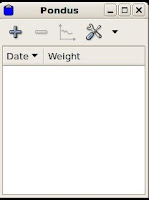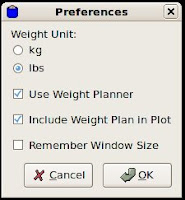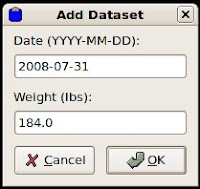Imagine the shock when I discovered my Debian Etch machine would not boot after I ran a "routine"
apt-get upgrade. The upgrade involved quite a number of packages, including the kernel image.
GRUB, the default boot loader, came to an abrupt stop with the error message
Error 15: File Not found.
The culprit was the file
/ [01;31mvmlinuz- [00m2.6.18-6-k7.
The weird-looking file name suggested strongly that the
GRUB config file,
/boot/grub/menu.lst, got corrupted by the upgrade.
At this point, I had the following options:
- Use a rescue CD/DVD like Knoppix to boot into the system, correct the menu.lst file, and reboot.
- While in GRUB, repair the corrupted pre-set GRUB commands, boot up the system, then correct the menu.lst file, and reboot.
I chose the second option. Below was my experience, followed by some suggestions based on the hard lessons I learned.
I rebooted the system. At the
GRUB menu, I selected the corrupted OS entry, and typed
e to edit this entry's associated pre-set boot commands. (Note that the OS entries and their associated commands are taken from the
menu.lst file.)
The boot commands associated with the OS entry were:
root (hd0,0)
kernel / [01;31mvmlinuz- [00m2.6.18-6-k7 root=/dev/mapper/tiger-root ro
savedefault
That did not look right because of the funny looking characters in the kernel command and the fact that the boot commands from before were
root, kernel, and
initrd, but NOT
savedefault.
ROOT
The
root command specifies and mounts GRUB's root drive and partition where the boot directory is located (
/boot). This is usually
(hd0,0) which means the first partition of the first hard disk. Note, GRUB's notation for numbering drives and partitions starts from 0, not 1.
If you are not sure what to set the root drive, enter the GRUB batch command mode by pressing
b, and enter the following
find command.
grub> find /grub/stage1
(hd0,0)
The
find command searches for the file named
grub/stage1 and displays the root drive and partition which contains the file. Note that if the drive does not have a partition designated for
/boot, you need to prepend
/boot to the command argument (
find /boot/grub/stage1)
So far so good: I did not have to modify the root drive.
KERNEL
The
kernel command specifies and loads the Linux kernel image. The default image file name was corrupted. To correct, I selected the
kernel command, and pressed
e to edit the line.
What should the file name be? Different Linux distributions name the kernel image file differently. Don't fret if you can't remember its name. The GRUB command line offers file name completion. So just enter
kernel / and then hit
tab.grub> kernel /
Possible files are: System.map-2.6.18-6-k7 config-2.6.18-5-k7 config-2.6.18-6-k7 initrd.img-2.6.18-5-k7 vmlinuz-2.6.18-5-k7 grub initrd.img-2.6.18-6-k7 System.map-2.6.18-5-k7 vmlinuz-2.6.18-6-k7
For Debian, Ubuntu, Fedora, and Mandriva, the kernel image file is named
vmlinuz followed by the kernel release number and the machine architecture (e.g.,
vmlinuz-2.6.18-6-k7). From the options returned by the file name completion feature, choose the kernel image with the latest release number.
The rest of the kernel parameters looked OK, and required no change.
grub> kernel /vmlinuz-2.6.18-6-k7 root=/dev/mapper/tiger-root ro
INITRD
Next, I had to replace the
savedefault command with the
initrd command.
initrd specifies the ramdisk image file. The RAM disk is used for loading modules required to access the root filesystem.
I first selected the
savedefault command and pressed
e to edit the line. Again, you could use the
Tab key to help you complete the filename for the RAM disk file.
grub> initrd /initrd.img-2.6.18-6-k7
Boot & Edit menu.lst
After I made the above changes, I went back to the GRUB main menu, and pressed
b to boot.
This time, the machine booted up successfully, and everything worked just fine for me.
I was not done however. Unless I changed the source of the problem (the corrupted
menu.lst), the machine would come up with the same boot error in the next reboot. So, as root, I opened the file
/boot/grub/menu.lst and edited the commands.
Before I could modify the corrupted commands, I needed to first locate the corresponding OS entry in the file. Each OS entry occupies a separate section in the file, beginning with its own title line. So, I scrolled down the file until I reached the target title line.
title Debian GNU/Linux, kernel [01;31m- [00m2.6.18-6-k7
root (hd0,0)
kernel / [01;31mvmlinuz- [00m2.6.18-6-k7 root=/dev/mapper/tiger-root ro
savedefault
After correcting the commands, save the file, and reboot the machine.
Lessons Learned
The GRUB config file (
menu.lst) can get corrupted, and when it does, it spells real trouble.
The commands to boot the OS are not something anyone tends to remember. So, it makes sense to have a print out of the
menu.lst file or a backup copy.
What I do is backup the
menu.lst file in the same directory as
menu.lst (say, call it
menu.lst.bak).
The advantage of saving it in the same directory (as opposed to somewhere over the network) is that if the
menu.lst file ever gets corrupted again, you can still display the backup copy at the grub command prompt. During the GRUB boot up process, you can display the backup file by simply entering the following at the GRUB command prompt.
grub> cat /grub/menu.lst.bak
The above
cat command displays the backup
menu.lst file. Armed with the knowledge of the correct commands to use, you can then edit the commands as shown in this article.










